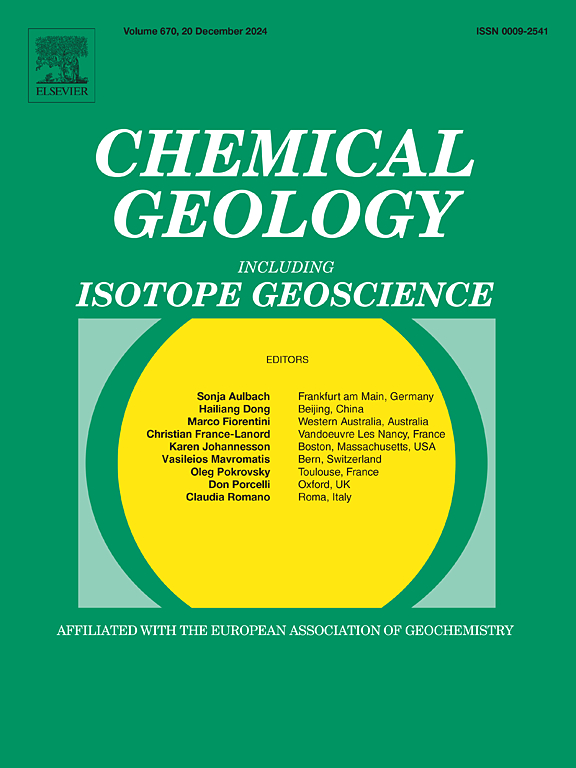Comparisons of pretreatment extraction methods for tree-ring radiocarbon analysis
IF 3.6
2区 地球科学
Q1 GEOCHEMISTRY & GEOPHYSICS
引用次数: 0
Abstract
An appropriate method for tree-ring pretreatment is essential to ensure the reliability of 14C data. This study compared three pretreatment methods for tree rings: acid-base-acid-bleaching (ABA-B), Jayme-Wise and an improved method proposed in this research. The improved method utilizes an ultrasonic bath instead of Soxhlet extraction in the Jayme-Wise method. We assessed the 14C results of the three methods using subfossil tree-ring samples from the Sixth International Radiocarbon Intercomparison and contemporary tree-ring samples from Shangdianzi. The 14C results showed that both the improved and the Jayme-Wise methods were effective for extracting α-cellulose from subfossil and modern tree-ring samples. The ABA-B method was sufficient only for subfossil wood, while unstable for the modern tree-ring samples when the heartwood-sapwood transition was presence. The Fourier-Transform Infrared spectroscopy results indicated that the purity of α-cellulose extracted by the improved method was similar to that of pure α-cellulose. In comparison to the Jayme-Wise method, the improved method reduced the extraction time and the amount of organic solvent, while increased batch processing capacity.

求助全文
约1分钟内获得全文
求助全文
来源期刊

Chemical Geology
地学-地球化学与地球物理
CiteScore
7.20
自引率
10.30%
发文量
374
审稿时长
3.6 months
期刊介绍:
Chemical Geology is an international journal that publishes original research papers on isotopic and elemental geochemistry, geochronology and cosmochemistry.
The Journal focuses on chemical processes in igneous, metamorphic, and sedimentary petrology, low- and high-temperature aqueous solutions, biogeochemistry, the environment and cosmochemistry.
Papers that are field, experimentally, or computationally based are appropriate if they are of broad international interest. The Journal generally does not publish papers that are primarily of regional or local interest, or which are primarily focused on remediation and applied geochemistry.
The Journal also welcomes innovative papers dealing with significant analytical advances that are of wide interest in the community and extend significantly beyond the scope of what would be included in the methods section of a standard research paper.
 求助内容:
求助内容: 应助结果提醒方式:
应助结果提醒方式:


